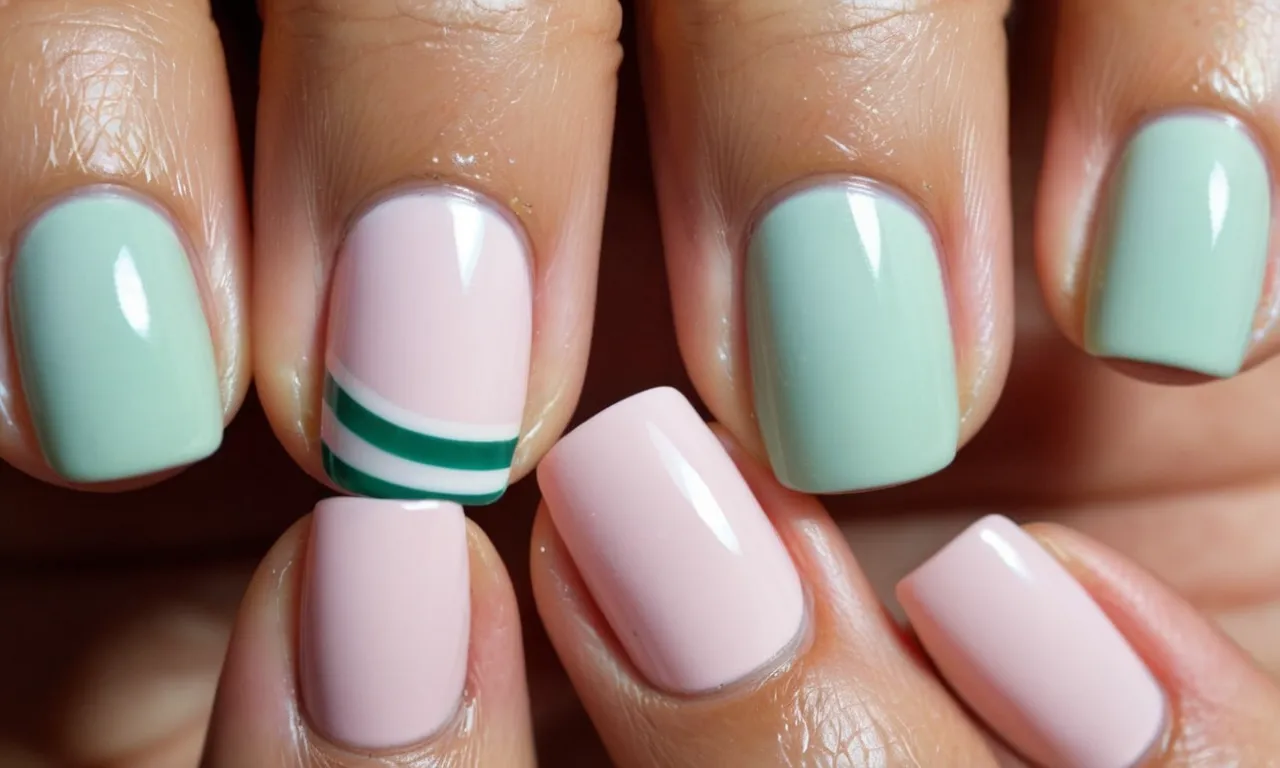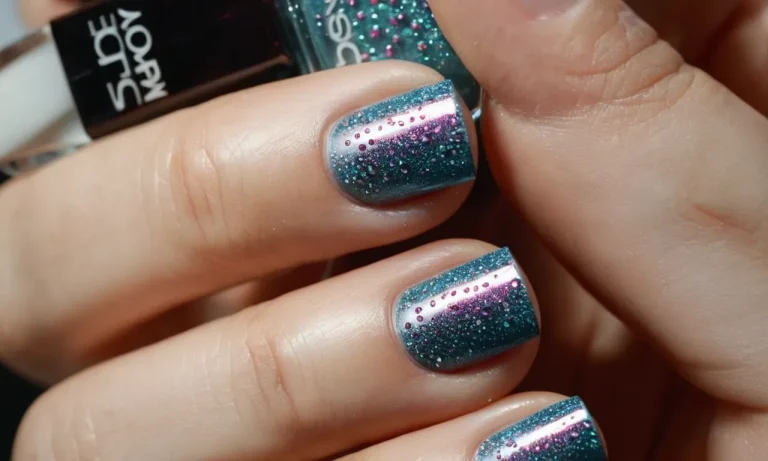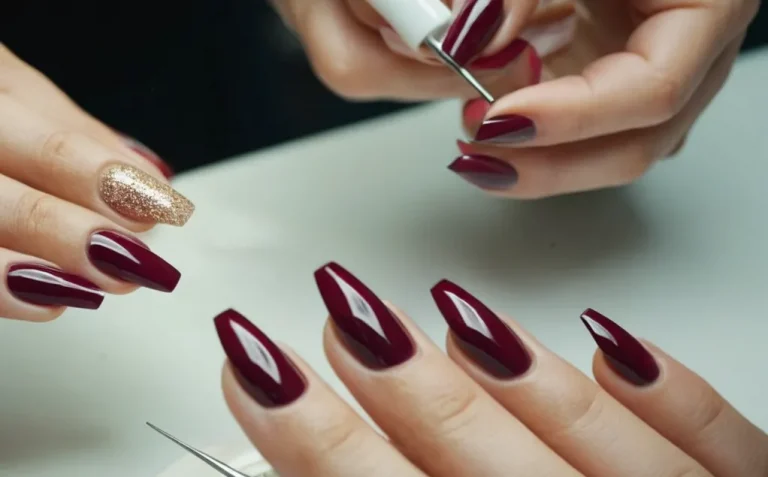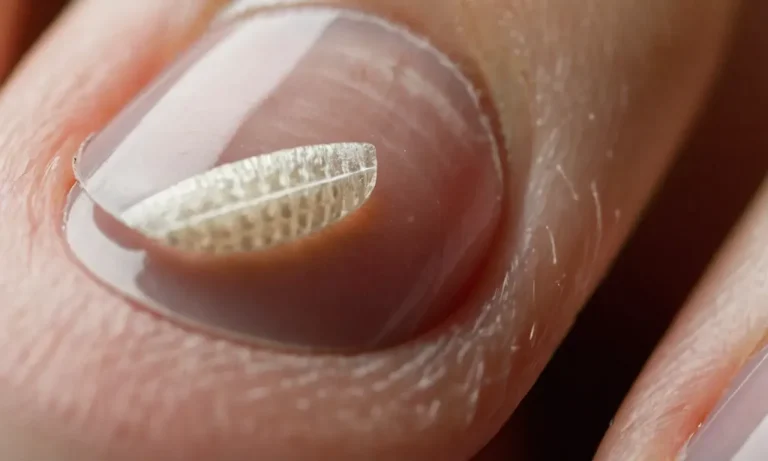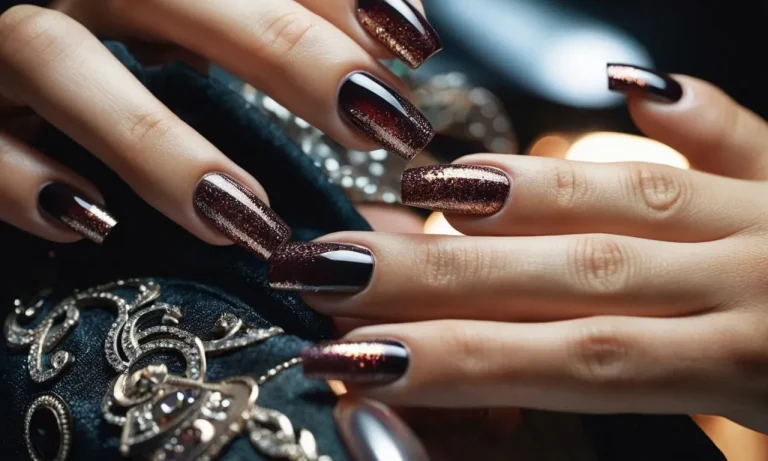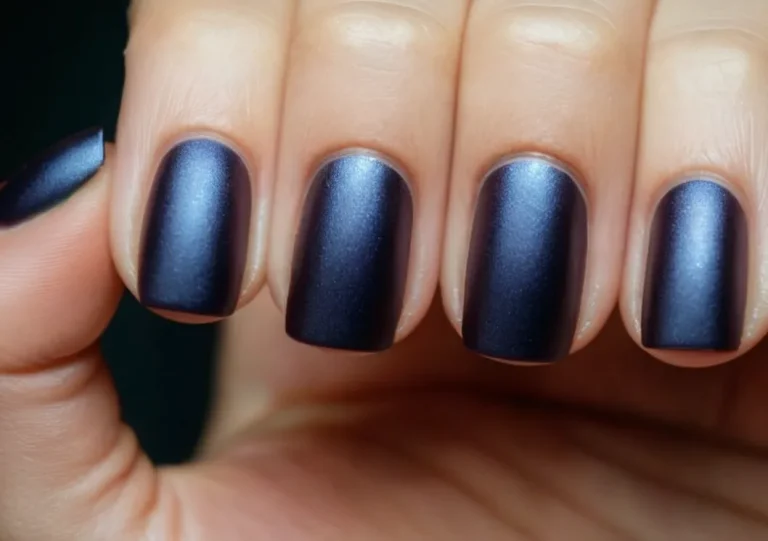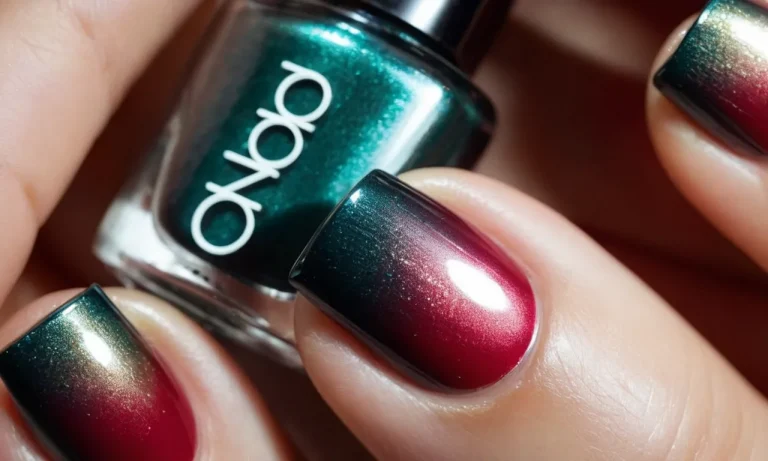Does Dip Powder Damage Your Nails?
With the rising popularity of dip powder manicures, many people wonder if this trendy nail service can damage their natural nails. If you’re short on time, here’s a quick answer: While dip powder itself does not damage nails, improper application and removal can lead to weakened, cracked, or peeling nails.
When done correctly, a dip powder manicure is generally safe for natural nails.
In this comprehensive guide, we will examine what dip powder is, its benefits over other enhancements like acrylics or gel polish, proper application and removal methods, ingredients to look for, and aftercare tips to keep your nails healthy.
What is Dip Powder?
Dip powder, also known as SNS powder, is a popular alternative to traditional acrylics or gel manicures. It uses a powder polymer and liquid activator to create a durable, long-lasting manicure.
Dip powder ingredients
The main ingredients in dip powder systems are:
- Powder polymers – These fine powders come in various colors and textures. They are made of plastic polymers like polymethyl methacrylate (PMMA).
- Liquid activators – This is the glue that makes the powder adhere to the nails. Activators contain methacrylic oligomers, which chemically bond powder layers together when cured under UV or LED light.
- Bonding agents – These help the first layer of powder polymer stick to the natural nails.
Dip powders also contain small amounts of pigments for color and benzoyl peroxide to enable curing under light. Compared to acrylics, they have very low odor and exposure to chemicals. Most dipping powders are free of formaldehyde, toluene, phthalates, and other harsh ingredients.
How is it applied?
A standard dip powder manicure involves these basic steps:
- Filing and shaping the natural nails
- Applying bonding base coat
- Dipping nails in colored powder container and tapping off excess powder
- Repeating dipping and layering to get desired thickness
- Applying activator spray or liquid to harden layers
- Filing and shaping final look
- Adding top coat for sheen and protection
This creates a durable, long-lasting manicure that can take 2-3 weeks to grow out. An average dip powder manicure takes 45-60 minutes at the salon. DIY dip powder kits are also available.
Compared to acrylics, dip powder application involves less harsh chemicals and drills. The powder layers bond together upon light curing and filing them down is easier than solid acrylics. However, they do add more thickness than regular nail polish.
Is Dip Powder Bad for Your Nails?
Dip powder manicures have become an increasingly popular alternative to traditional acrylics and gel manicures. While the finished look of dip powder nails is gorgeous, some people worry that the application and removal processes could be damaging to the natural nail.
Here’s a closer look at whether dip powders are actually bad for your nails:
Can cause damage if applied/removed improperly
Like other nail enhancement techniques, dip powders do carry some risk of damage if not applied and removed properly. Here are some of the potential risks:
- Over-filing the natural nail during preparation can thin and weaken the nails, making them more prone to breaking.
- Improper application and shaping techniques can lead to cracking or peeling.
- If the dip powder or activator liquid contains harmful chemicals like formaldehyde, it could irritate the skin and nails.
- Pulling off dip powder can rip off layers of the natural nail.
To avoid these types of damage, it’s essential to go to a skilled nail technician who follows best practices for dip powder application and removal. Reputable salons will use high-quality, non-toxic products and take care to prep and shape the nails properly before applying dip powder.
During the removal process, they’ll soak off the powder gently rather than yanking it off.
Minimal damage when done correctly
The good news is that, when applied correctly by a professional, a dip powder manicure is no more damaging to the nails than a standard acrylic or gel manicure. Here are some of the reasons why dip powders get a thumbs up for nail health when done properly:
- The powders don’t require a primer, so there is one less chemical product on the nails.
- Dip powder is applied over the natural nail, so it doesn’t require aggressive filing or drilling like acrylics.
- The powder is quite flexible, so it is less likely to crack or peel than acrylic.
- Dip manicures can last 3-4 weeks, allowing more time between manicures for nails to recover.
Choosing non-toxic powders and working with an experienced technician prevents almost all risk of nail damage with dip powders. Many people find their nails actually grow stronger and healthier with routine dip manicures compared to other enhancement techniques.
Anecdotal evidence suggests dips may be one of the safest options for people prone to brittle, peeling nails.
Benefits of Dip Powder Over Other Nail Enhancements
Less harsh on nails than acrylics
Dip powder manicures have become a popular alternative to acrylics and gel polish in recent years. Unlike acrylics which require substantial filing and prep work on the natural nail, dip powders are a lighter layer that sits on top of the nail.
The dip powder itself is finely milled powder made from polymer materials that harden when activated by a liquid bonder. This allows for a thin, durable coat that doesn’t damage the natural nail underneath.
Acrylic application requires aggressive filing and dehydration of the natural nail bed. This filing compromises the strength of the nail and can lead to peeling and breakage after removal. With dip powders, only very light filing and buffing is needed so the integrity of the natural nail remains intact.
Many users report their nail beds feel stronger and healthier after using dip powders because they aren’t subjected to the harsh process of acrylic or gel polish application.
More durable than gel polish
While gel polish has increased in popularity for its chip-resistant wear, it still can’t compare to the hardness and durability of a dip powder manicure. The powder layers create a thicker, stronger coat of polish that is very difficult to chip or scratch.
Salon dip powder manicures can last 3-4 weeks without showing signs of wear, much longer than a typical gel polish manicure which lasts 2-3 weeks at most.
The chemical bonding process used to set dip powders also helps create a more durable manicure. Each layer of powder is activated by a liquid bonder containing resin, resulting in a hardened finish. With gel polish, there are essentially layers of polish cured by UV or LED lighting.
Though gel polish is more durable than regular polish, it still can’t stack up against the strength of dip powder.
For those looking for an extended wear polish option that can hold up to daily activities and wear, dip powders are the most durable choice. Their tough finish resists chips, scratches, and wear better than gels or acrylics.
Gel polish may be the easiest for removal, but for maximum strength and hardness, dip powders deliver the most unbreakable manicure.
Proper Application and Removal Methods
Sanitization
Sanitizing the natural nails beforehand is crucial to prevent infections or damage when applying dip powder. The process should involve using a nail dehydrator to remove oils, pushing back and trimming cuticles, then scrubbing nails with a nail brush, soap and water.
Finally, use an antiseptic like Salon Safe to sanitize the nails and remove any leftover debris or bacteria (Source). Proper sanitization sets up the nails for safe adhesive application.
Avoid overfiling natural nail
It is vital not to overfile the natural nails when prepping them for dip application or removing dip powder. Aggressive filing thins out the nails, causing weakness, peeling, cracking and breakage over time.
When shaping before application, use a fine grit file and file gently in one direction instead of back and forth. During removal, soak off the majority of product before lightly filing off any remainder to avoid touching the natural nail if possible.
Do not pick/peel off dip powder
Never peel or pick off hard dip powder adhesively stuck to the natural nails. This can rip off layers of the actual nail plate, causing damage, pain and openings for infection. The proper removal method is filing down the majority of the dip color layers until a small amount remains on the nails.
Then soak cotton balls in pure acetone and wrap the nails for 10-15 minutes. The dip powder should slide off without needing to pick at it. This protects the natural nail bed so it remains smooth and intact.
Ingredients to Look For
Free of harmful chemicals
When choosing a dip powder system, it’s important to select products that are free of harmful ingredients like formaldehyde, toluene, dibutyl phthalate (DBP), and triphenyl phosphate (TPHP). These chemicals are found in some nail products and can be absorbed through the nails, causing issues like irritation, brittle nails, and allergic reactions in sensitive individuals.
Instead, look for dip powders clearly labeled as being “3-free”, “5-free”, “7-free”, or “9-free”, indicating they are free of some or all of these chemicals of concern.
Some of the healthier ingredients to look for are:
- Vitamin E – Helps strengthen nails
- Biotin – Promotes strong, healthy nails
- Calcium – Helps nails become less brittle
- Zinc – Contributes to nail health
- Keratin – The main protein in nails, adds strength
Choosing an acetone-free dip powder removal system is also advisable, as constant acetone exposure can lead to dry, brittle nails over time. Instead, look for gentle, nourishing removal products infused with oils, vitamins, and moisturizers.
Nourishing ingredients
While the base and activator are important for chemistry, the dip powders themselves can include nourishing ingredients to help maintain strong, healthy nails:
- Vitamins (A, C, E, B5, B7) – Provide antioxidant protection
- Jojoba oil – Deeply moisturizes
- Keratin – Reinforces nails
- Calcium – Strengthens against breaks
- Bamboo extract – Contains silica for nail health
Nail-friendly dip powder colors will also be free of FD&C pigments and synthetic dyes that can stain nails. Opting for options with natural mineral pigments is a safer bet.
Beyond ingredients, it’s wise to give nails a break in between dip powder manicures, removing for a week or two to allow nails to breathe before reapplication. This helps avoid excessive damage from constant acrylic/dip contact.
Taking oral nail supplements containing biotin, vitamin E, and zinc can also help reinforce nails and counteract any weakening effects of prolonged dip powder wear. With proper removal and care, dip powders can be a fun, damage-free option for stylish nails!
Aftercare Tips
Keep nails moisturized
Keeping your nails properly moisturized is crucial for maintaining healthy nails after repeated dip powder applications. The drying acrylics in dip powders can cause brittleness and peeling if you don’t take proactive steps to hydrate the nail bed and cuticles.
Be sure to apply a nourishing nail oil like jojoba or vitamin E oil daily, massaging it into the nail bed and cuticles. This helps counteract drying and allows moisture to penetrate the layers of powder on top.
For deeper conditioning, apply oil generously and wear cotton gloves overnight as you sleep. Consider weekly moisturizing treatments like paraffin wax or shea butter masks too.
In addition to oils and masks, use a high-quality nail hydration base coat underneath dip powders. Base coats create a protective buffer to avoid excessive drying while still allowing the powders to adhere properly. Be sure to reapply base coat with each new set too.
Take occasional breaks between powders
While dip powders allow nails to grow naturally without damaging glue or primer chemicals, having any acrylic substance persistently coated on your nails can still cause weakness, brittleness, or other damage over time.
That’s why it’s wise to take occasional breaks of 1-2 weeks between dip powder applications every 2-3 months. Allow your natural nails to breathe and regenerate with some nail “vacations.” You’ll come back to your next powder set with stronger, healthier nail beds as a result.
If you notice cracking, peeling, increased brittleness or other signals of damage, take it as a sign to pause powders for a while. Use the break to treat nails to restorative oils, creams, and home conditioning treatments until nails feel strong again.
Starting dip powders again too soon can progress damage issues.
Here’s a comparison of pros taking routine breaks offers versus not giving nails a break:
| Taking Breaks | No Breaks |
|---|---|
|
|
By routinely allowing nails to take brief breaks and rejuvenate before the next powder set, you support nail health for the long term. Your manicurist can best advise on ideal break frequency and duration based on nail condition.
For more information, check the nail care guides on Nail Care HQ and NAILS Magazine.
Conclusion
While dip powder manicures have become widely popular for their durability, flawless appearance, and efficient application process, improper methods can lead to nail damage. However, when applied and removed properly by a skilled technician using quality products, a dip powder manicure is a safe, long-lasting enhancement option.
We recommend keeping nails strong and healthy by moisturizing daily, taking occasional breaks between powders, avoiding excessive filing and picking, and always having dip powder properly soaked off rather than ripping it off.

